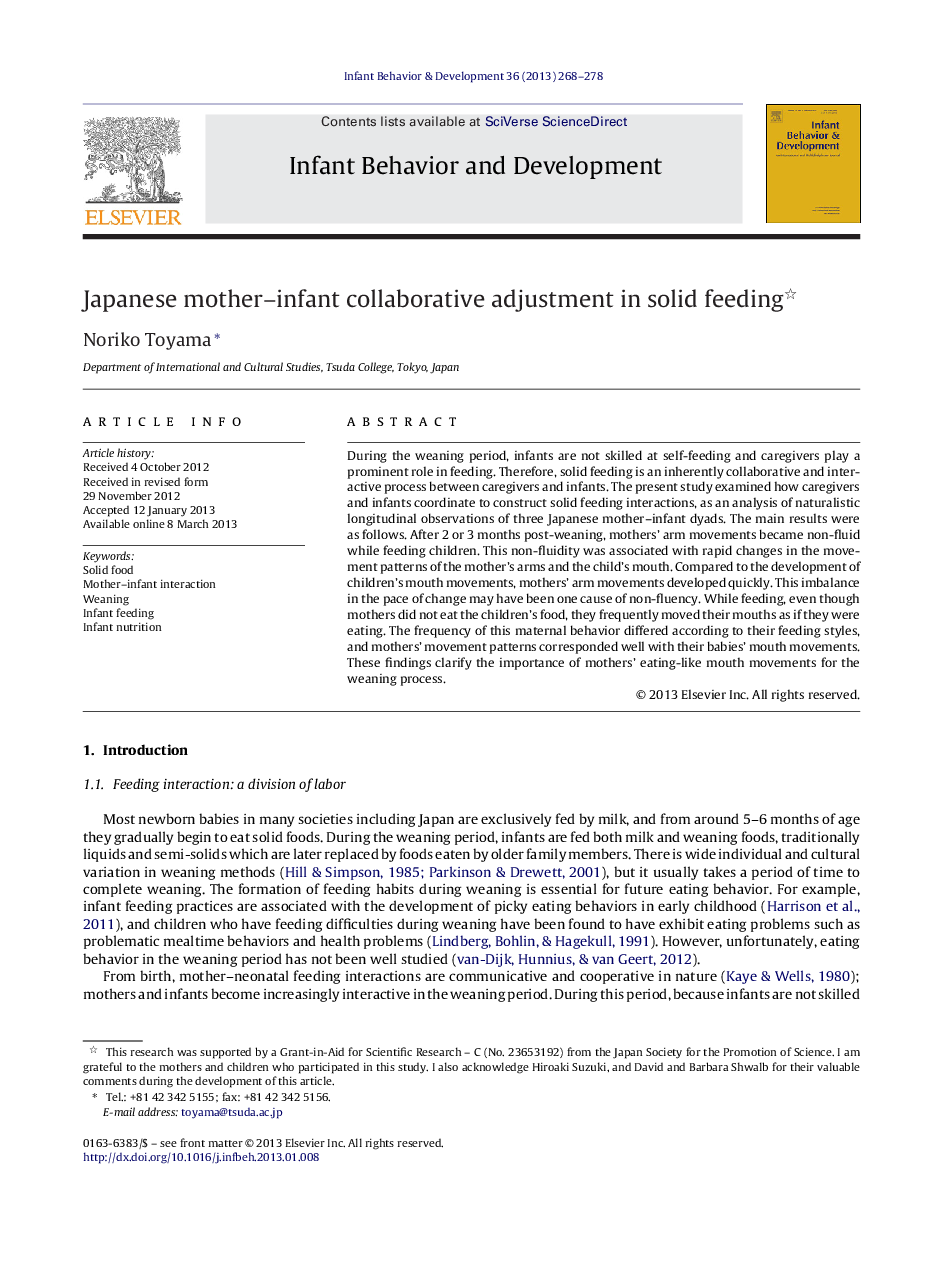| کد مقاله | کد نشریه | سال انتشار | مقاله انگلیسی | نسخه تمام متن |
|---|---|---|---|---|
| 917218 | 919254 | 2013 | 11 صفحه PDF | دانلود رایگان |

During the weaning period, infants are not skilled at self-feeding and caregivers play a prominent role in feeding. Therefore, solid feeding is an inherently collaborative and interactive process between caregivers and infants. The present study examined how caregivers and infants coordinate to construct solid feeding interactions, as an analysis of naturalistic longitudinal observations of three Japanese mother–infant dyads. The main results were as follows. After 2 or 3 months post-weaning, mothers’ arm movements became non-fluid while feeding children. This non-fluidity was associated with rapid changes in the movement patterns of the mother's arms and the child's mouth. Compared to the development of children's mouth movements, mothers’ arm movements developed quickly. This imbalance in the pace of change may have been one cause of non-fluency. While feeding, even though mothers did not eat the children's food, they frequently moved their mouths as if they were eating. The frequency of this maternal behavior differed according to their feeding styles, and mothers’ movement patterns corresponded well with their babies’ mouth movements. These findings clarify the importance of mothers’ eating-like mouth movements for the weaning process.
► The present study examined how caregivers and infants coordinate to construct solid feeding interactions.
► After two or three months post-weaning, mothers’ arm movements became non-fluid while feeding children.
► This non-fluidity was associated with rapid changes in the movement patterns of the mother's arms and the child's mouth.
► While feeding, even though mothers did not eat the children's food, they frequently moved their mouths as if they were eating.
Journal: Infant Behavior and Development - Volume 36, Issue 2, April 2013, Pages 268–278